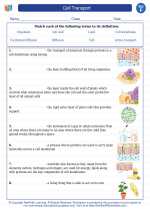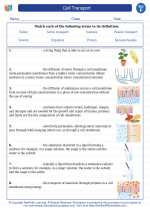Cotton
Cotton is a soft, fluffy fiber that grows in a boll, or protective case, around the seeds of the cotton plant. It is one of the most important natural fibers used by humans, with uses ranging from clothing and bedding to medical supplies and paper products.
Structure of Cotton
Cotton fibers are made of almost pure cellulose, which gives them their characteristic strength, flexibility, and absorbency. The fibers are composed of concentric layers of cellulose molecules, arranged in a unique, twisted ribbon-like structure.
Growth and Harvesting
Cotton plants, typically from the Gossypium genus, are grown in warm climates with moderate rainfall. The plants produce flowers that develop into the bolls containing the cotton fibers. After the bolls ripen, they are harvested using mechanical equipment to separate the fibers from the seeds.
Uses of Cotton
Cotton is perhaps best known for its use in textile production. The fibers are spun into yarn or thread and used to make a wide variety of products, including clothing, towels, sheets, and much more. Additionally, cottonseed oil is used in cooking and food products, while the remaining seed and plant material can be used for animal feed and other industrial purposes.
Environmental and Economic Importance
Cotton is a crucial crop for many economies around the world, providing income and employment for millions of people. However, its cultivation can also have environmental impacts, including water usage and pesticide use. Efforts are being made to develop more sustainable and eco-friendly cotton farming practices.
Study Guide
Here are some key points to remember about cotton:
- Cotton fibers are composed of almost pure cellulose, giving them strength and absorbency.
- Cotton plants produce bolls containing the fibers, which are harvested for various uses.
- Uses of cotton include textiles, cooking oil, and industrial products.
- Cotton is an important crop economically, but its cultivation can have environmental impacts.
Now that you have a basic understanding of cotton, consider researching further into its cultivation, processing, and impact on the environment and economy.
.◂Science Worksheets and Study Guides Sixth Grade. Cell Transport

 Worksheet/Answer key
Worksheet/Answer key
 Vocabulary/Answer key
Vocabulary/Answer key
 Vocabulary/Answer key
Vocabulary/Answer key
